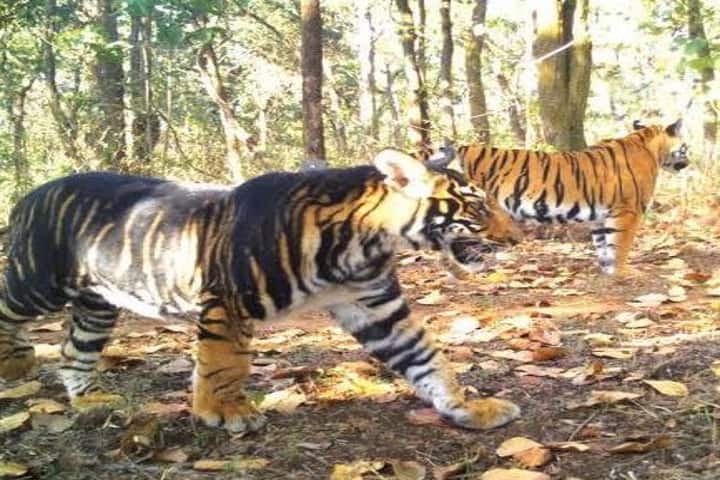Similipal Tiger Reserve lost one of its tigers as per the forest officials on Monday. The creature – three-year-old male melanistic or the tiger with black stripes – was found dead in Nawna in STR’s south division.
STR in Odisha’s Mayurbhanj district, has the singular distinction of being the only reserve with a large number of melanistic tigers.
Initial investigation suggests that the tiger died due to injuries it received while fighting another male. Talking to the media, S.K. Popli, Principal Chief Conservator and Chief Wildlife Warden said that on turning three, the male starts looking for its own territory. This often leads to skirmishes with other males.
So lovely to see the rare melanistic tiger marking its territory in Odisha’s Simlipal National Park.
Tiger symbolises sustainability of our forests and so this sighting makes us all happy. pic.twitter.com/KuppjAVXIa
— Bhupender Yadav (@byadavbjp) August 1, 2022
As per Prakash Gogineni, Similipal Field Director the camera trap capture of the tiger confirms that it was wounded and that it had deep claw marks.
Post-mortem of the carcass was carried out and samples of autopsy have been sent to Odisha University of Agriculture and Technology and Wildlife Institute of India. The procedure was carried out by a team of veterinary experts in the presence of Gogineni, Divisional Forest Officer, representatives of National Tiger Conservation Authority and joint task force.
While the report is awaited, officials added that the possibility of poaching has been ruled out since the range where the tiger was found is in the core area and the nearest village is five kilometres away.
STR has a large number of tigers with melanism or black pigmentation as it is isolated and offers very little scope for the big cats to mate with others in the nearby reserves. The resultant in-breeding causes the black pigmentation.
A TOI report quoting Anup Nayak, former NTCA member secretary and Similipal Field Director said, that melanistic tigers were first sighted in STR in 2007. “Having melanistic breed of big cats in a reserve indicate that there is restricted breeding without genetic variations,” he said.



















